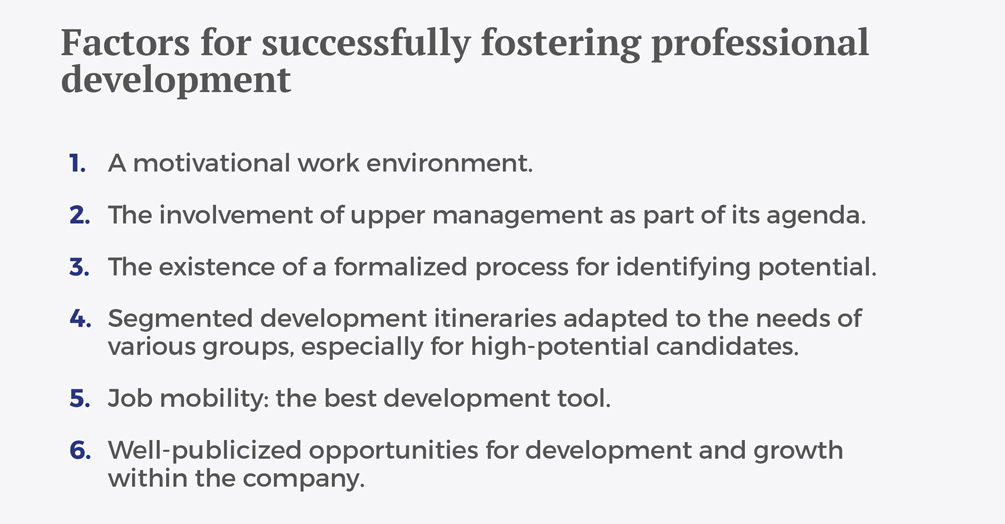The fast-paced digital transformation currently taking place within organizations poses a major challenge for human resources managers. This cultural change is having an enormous impact on organizational structures, decision-making processes, professional profiles, talent recruitment, and leadership styles. Tech-based companies have set an example to follow in this process of change. Just as disruptive technologies have proven themselves capable of usurping traditional businesses, human capital management must also undergo a transformation; technology has become a differential factor in the management of people.
Agility in the face of change
Digital transformation entails more than just incorporating disruptive technology into a company’s operations; the management and decision-making models must also be fundamentally overhauled to foster operational agility. The “agile” concept first emerged at software-development companies as a way to adapt quickly during the process of creating customer-oriented products. In this incarnation, the agile approach involved operational processes and methods not found at more traditional companies.
Agility means knowing how to respond quickly to events, add value continuously, maximize autonomy and empowerment in decision-making, and encourage collaborative work geared towards generating deliverables. Working with this mindset, teams organized in “tribes” and “squads” operate autonomously—like at a startup—to create end-to-end solutions and products. Say goodbye to any intermediate validation or financial processes that would slow down these dynamics. Under the guidance of a leader, a service can be adapted to the customer’s needs. Agile leadership calls into question the basic operational principles undergirding more traditional companies.
Work is no longer seen as a goal, but as a means to an end. Unless companies transfer this philosophy to their management, they will have trouble maintaining a committed staff and keeping the best people.
Changing the culture to change the strategy
Corporate culture is what determines “how you do things” in an organization (as opposed to “what you say you do”). Culture is the most intangible and emotional part of an organization and its people; therefore, cultural change is a long, complex process that fundamentally alters shared beliefs, values, and behaviors. In order to successfully change its strategy, a company must first consider how to push its culture forward so that it becomes a lever instead of an obstacle.
CEOs of large companies (see: Microsoft) are as concerned about cultural change as they are about redesigning their business strategy, since people’s behavior and decision-making habits are what ultimately make the difference between success and failure. Peter Drucker, the father of 20th-century management, made an observation that every agile leader remembers well: “Culture eats strategy for breakfast.”
Diversity management: the key to leadership
Cultural redesign involves confronting the various handicaps and obstacles that a company must overcome. As the human lifespan grows longer—and with it, our working lives—today’s leaders are finding that they must manage a staff ranging in age from 20 to 70 years. This generational diversity adds an extra layer of difficulty to leadership, especially since the arrival of the millennials and Generation Z, with their distinct cultural patterns, values, and expectations.
A company’s value proposition must therefore incorporate lines of action oriented towards work-life balance and flexibility—critical factors for attracting and retaining talent. Work is no longer seen as a goal, but as a means to an end. Unless companies transfer this philosophy to their management, they will have trouble maintaining a committed staff and keeping the best people.
Teams organized in “tribes” and “squads” operate autonomously—like at a startup—to create end-to-end solutions and products.
Creating leaders: a key business process
In this context, companies must dig deeper in the search for, and development of, new leadership capacities—a critical process for ensuring the sustainability of a business.
Each organization must begin by analyzing its current business moment in order to realistically define its needs and the profiles capable of successfully leading its projects. The human resources team should be involved in this process, paying close attention to the company’s business strategy. The organization’s needs—in terms of capacities—must be clarified in order to guarantee that its leadership is aligned with specific development opportunities and needs.
When it comes to building the leadership of the future, identifying high-potential profiles is fundamental. Potential means having what it takes to succeed in a role at some point in the future—a prediction ideally based on specific, measurable evidence. To measure potential, companies can use various indicators that predict the speed of a person’s development and learning. Global vision, achievement orientation, risk-taking, resilience, flexibility, adaptation to change, empathy, and influence are among the most important competencies of a high-potential profile. It is also advisable to consider various personality-related factors that will either help or hinder a person’s success in a leadership role.
Finally, it is important to foster professional development by offering solutions aligned with people’s needs, for example by creating development itineraries that combine formal learning with real-life experiences. Job mobility oriented towards personal development lends greater visibility to career opportunities and is also a critical factor for motivation and retention.

For any organization interested in developing the sort of leadership it needs, it makes sense to adopt a development process that includes these elements. This is also a preliminary step towards creating a talent map for group segmentation. Such a map is an ideal tool for making decisions about human capital—a critical factor for the success of any business plan.
© IE Insights.











